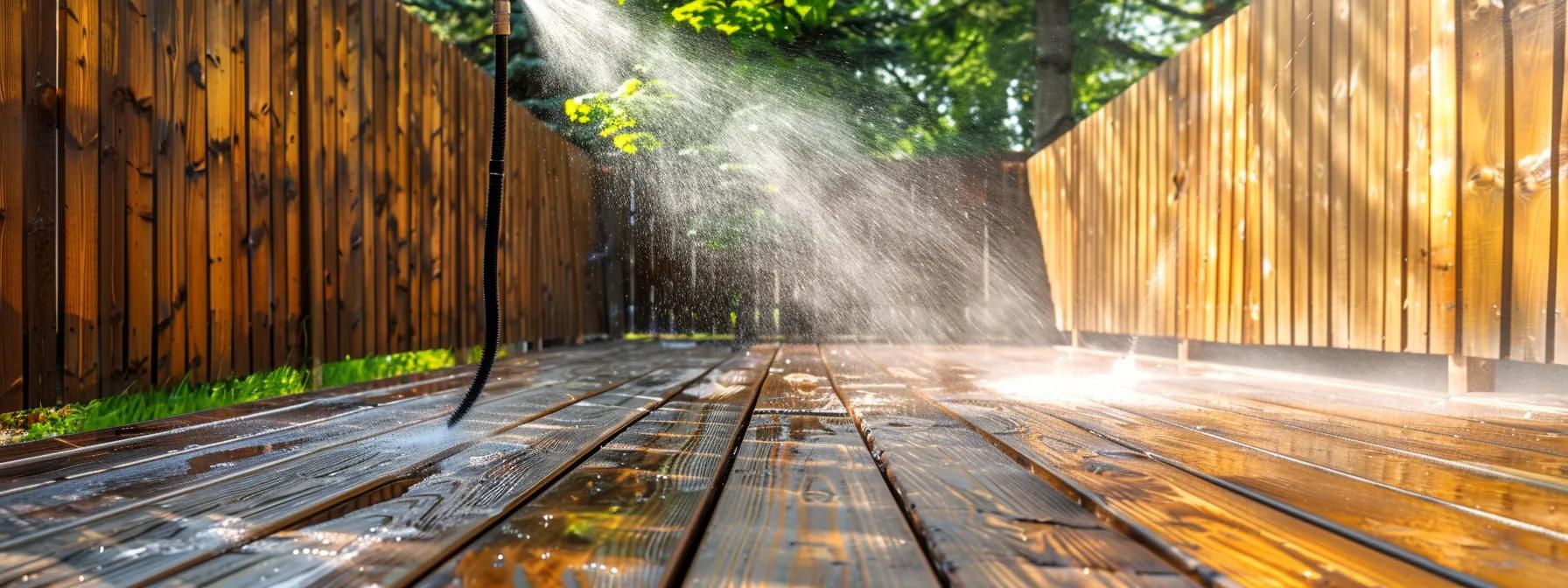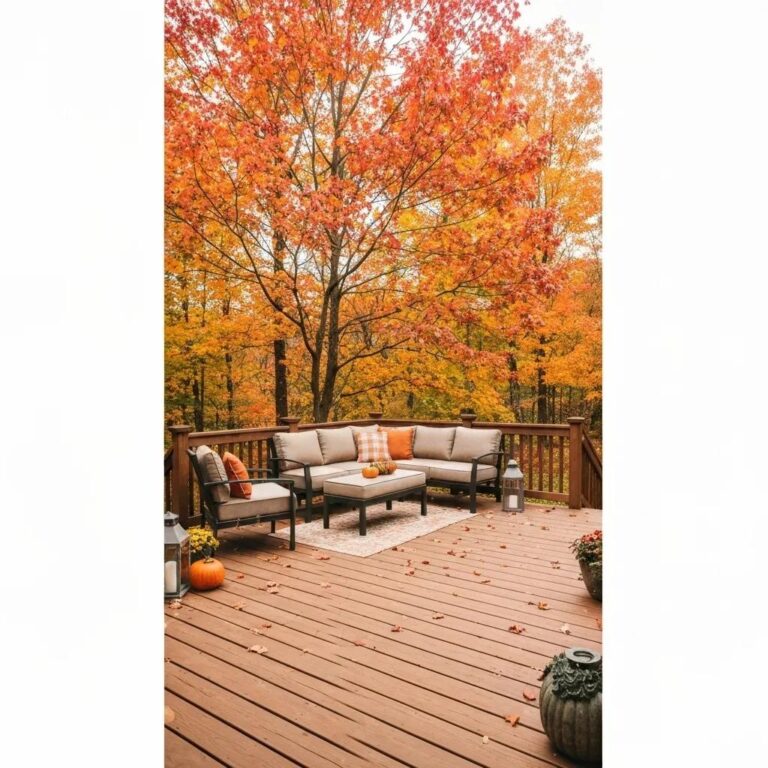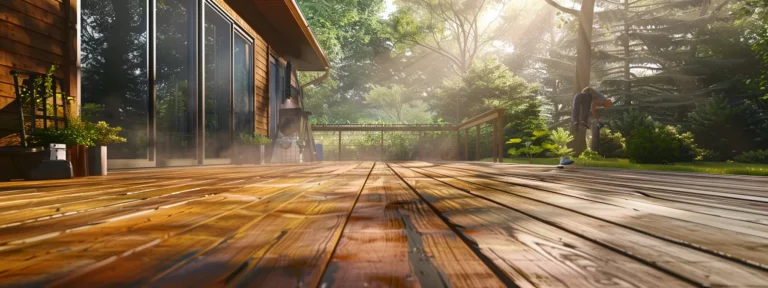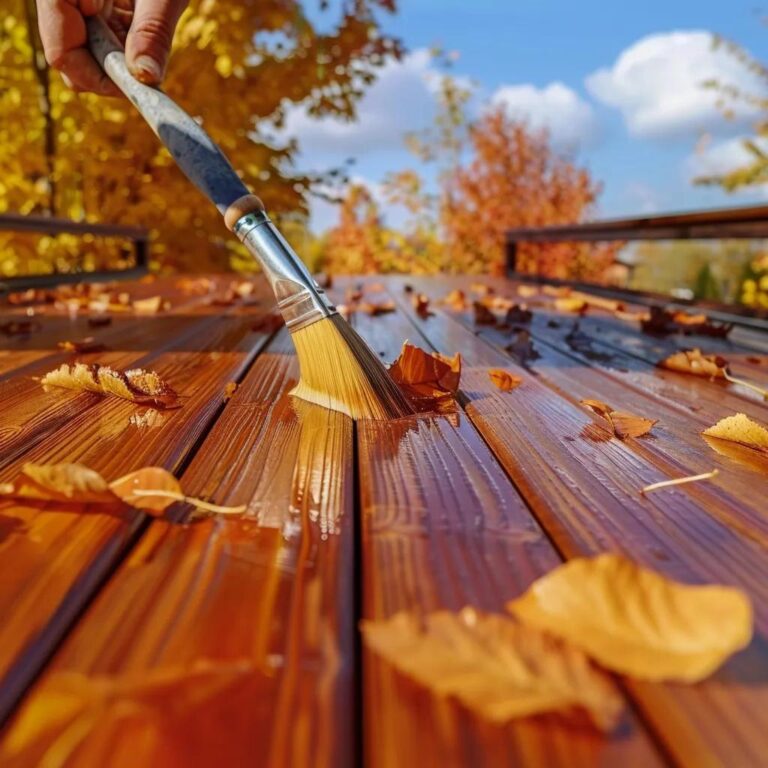Several wood stain needs.
Deck stain is a vital treatment for preserving the beauty, durability, and safety of outdoor wooden surfaces. Exposed to sun, rain, and fluctuating temperatures, untreated wood is prone to rot, fading, and weather damage. This article examines the key benefits of deck stain, explores various types available, offers guidance for choosing the right product for your deck, and outlines best practices for application and maintenance. Homeowners and deck enthusiasts can make informed decisions to protect their investment while enhancing the aesthetic appeal of their outdoor spaces.
In this article, we define deck stain by discussing its protective properties, ability to enhance wood appearance, and role in prolonging deck life. Real-world examples demonstrate how treated decks resist weather-induced damage, retain vibrant wood grain, and maintain structural integrity. With proper application and periodic upkeep, deck stain can prevent costly repairs and provide a lasting finish that complements any outdoor design.
Transitioning to the main content, we now delve into the specific questions that concern every deck owner.
What Are the Key Benefits of Using Deck Stain?
Using deck stain not only improves appearance but also provides essential protection. Its benefits include shielding wood from weather damage, enhancing its natural look, blocking harmful ultraviolet light, and extending the deck’s lifespan.
How Does Deck Stain Protect Wood From Weather Damage?
Deck stain forms a protective barrier against rain, snow, and humidity. By penetrating the wood surface, it reduces water absorption, preventing rot, warping, and splintering. The stain seals the pores of the wood, minimizing water damage even during heavy rain. It also curbs microbial growth such as mold and mildew, especially in humid conditions, and protects wood fibers from repetitive freeze-thaw cycles. This protection reduces the frequency of repairs and replacement, ultimately lowering maintenance costs.
In What Ways Does Deck Stain Enhance Deck Appearance?
A deck treated with wood stain exudes warmth and character, transforming outdoor spaces into inviting retreats. The stain deepens the wood’s natural grain and color, offering a range of hues from clear and natural to rich, earthy tones. Because the stain soaks into the wood rather than forming a surface film, it preserves texture and avoids flaking. Modern formulations include additives to reduce fading, ensuring the deck maintains a vibrant, uniform appearance that complements both traditional and contemporary design styles.
How Does Deck Stain Provide UV Protection for Your Deck?
Ultraviolet rays are a leading cause of wood discoloration and damage. Deck stains include UV inhibitors that absorb harmful rays, reducing their penetration into the wood fibers. This UV protection not only preserves the natural color of the wood but also maintains its structural integrity by preventing photodegradation and subsequent cracking. In sunny regions, this barrier is crucial for keeping the deck’s finish vibrant and intact over the years.
Why Is Deck Stain Important for Deck Longevity and Maintenance?
Consistent use of deck wood stain extends a deck’s lifespan by defending against moisture, UV rays, and biological agents. A well-stained deck is less susceptible to common issues like splintering, cracking, and decay. Fewer repairs are needed when the protective stain remains intact, and regular reapplications help maintain safety by preventing loose or worn boards. In addition to its practical benefits, deck stain preserves and enhances the overall visual appeal of an outdoor space, protecting a valuable home investment.
What Are the Different Types of Deck Stain and Their Features?
There are several types of deck stain available, each balancing protection, appearance, and environmental impact. The primary options are oil-based, water-based, solid color, and semi-transparent stains.
What Are the Advantages and Disadvantages of Oil-Based Deck Stains?
Oil-based stains penetrate deeply into wood fibers, offering strong moisture resistance and a rich finish that highlights the natural grain. They are known for their durability and are ideal for high-traffic decks. However, oil-based stains also have drawbacks: they require longer drying times, emit stronger fumes due to volatile organic compounds (VOCs), and necessitate solvent-based cleanup. Environmentally conscious users may find the higher VOC levels and disposal issues problematic despite the excellent protection they offer.
How Do Water-Based Deck Stains Compare in Performance and Eco-Friendliness?
Water-based stains are a modern alternative, providing similar benefits with faster drying times and lower odor. Using water as the primary solvent, these stains offer easier cleanup and lower VOC emissions, making them a more eco-friendly option. While they may not penetrate as deeply as oil-based formulas, improvements in formulation have enhanced their durability and UV resistance. They are also easier to touch up, making them a flexible option for preservation and maintenance.
What Are Solid Color Deck Stains and When Should You Use Them?
Solid color stains produce a uniform, opaque coating that masks the wood grain completely. This finish is ideal for decks with surface imperfections or when a dramatic color change is desired. Because the solid coating blocks sunlight entirely, it offers strong UV protection and reduces fading. However, by concealing the wood’s natural beauty, solid stains may not suit those who value the intrinsic character of quality wood. They work best for achieving a consistent, modern look in contemporary outdoor designs.
How Do Semi-Transparent Deck Stains Balance Protection and Natural Wood Look?
Semi-transparent stains strike a balance by enhancing the wood’s color and texture while still allowing the natural grain to show through. These stains include pigments that provide a subtle color boost without completely covering the wood. Ideal for decks with appealing wood patterns, they offer moderate protection against UV rays and moisture while maintaining an authentic, natural appearance. Their ease of reapplication makes them a practical and popular choice for many homeowners seeking both beauty and durability.
How Do Deck Stain Types Differ in Durability and Weather Resistance?
The durability of deck stain depends on its formulation. Oil-based stains typically offer superior weather resistance with a robust, long-lasting finish suited for harsh climates. Water-based formulas, despite being more eco-friendly, might require more frequent reapplications under severe conditions but perform well due to modern advancements. Solid color stains provide maximum UV blocking but may show wear faster in high-traffic areas, while semi-transparent stains offer a balance between protection and aesthetics, adapting well to various weather conditions.
How Do You Choose the Right Deck Stain for Your New or Existing Deck?
Selecting the appropriate deck stain requires considering factors such as color, wood type, environmental conditions, and the desired finish. Making a well-informed choice will ensure long-lasting protection and an appealing look.
What Factors Should Influence Your Deck Stain Color Selection?
When choosing a stain color, consider how it will complement your home’s exterior and surrounding landscape. The type of wood, its natural color, and the exposure to sunlight influence which shade will work best. Lighter stains can make small decks appear larger, while darker hues give a rich, classic appearance. Keep in mind that darker stains may reveal wear more quickly and could require more frequent reapplication, so balancing aesthetics with wood stain needs is key.
How Does Deck Material Affect Stain Type Selection?
Different woods interact with stain uniquely. Softwoods like pine or cedar, which are more porous, often absorb wood stain unevenly unless properly prepped, whereas hardwoods with natural oils are less absorbent and may benefit from oil-based formulas for deeper penetration. Engineered or composite decks might perform better with water-based options that do not require deep penetration. Understanding the specific characteristics of your deck’s material ensures proper adhesion and a uniform finish.
How Do Climate and Environmental Conditions Impact Stain Choice?
Climate plays a pivotal role in stain performance. In regions with high humidity, frequent precipitation, or extreme temperature fluctuations, choosing a stain with strong moisture resistance and UV inhibitors is critical. Mildew-resistant formulas are advantageous in damp environments, and coastal areas benefit from stains that counteract salt exposure. The expected weather conditions should guide your stain selection to ensure lasting protection and minimal reapplication.
What Are Popular Deck Stain Colors and Finishes?
From natural clear finishes that emphasize wood beauty to deep stains like mahogany or espresso, popular deck stain options cater to various tastes. Semi-transparent finishes are widely used for their ability to balance natural texture with enriched wood stain . Lighter, contemporary shades like weathered gray or driftwood blend well with modern architecture, while matte finishes offer a subtle, natural look in contrast to semi-gloss options that highlight wood grain. Choose a finish that not only matches your style but also meets durability and maintenance expectations.
What Are the Best Practices for Applying Deck Stain Effectively?
Proper application is essential to achieve an even, long-lasting finish. The following practices ensure that your deck stain performs optimally.
How Should You Prepare Your Deck Before Staining?
Preparation is the most critical step. Begin by thoroughly cleaning the deck to remove dirt, debris, mold, and any previous coatings. A gentle pressure wash can be effective, but avoid high pressure that might damage wood fibers. Allow the deck to dry completely—this may take up to 48 hours—and lightly sand the surface to remove splinters and ensure even absorption. Repair any damaged boards before proceeding to achieve a smooth, uniform application.
What Are the Most Effective Deck Stain Application Methods?
Deck stain can be applied using brushes, rollers, or sprayers. Brushing works well for small, detailed areas while rolling is efficient for larger surfaces. Spraying offers a quick and even finish but requires practice to avoid overspray. Often, a combined approach is ideal: first applying a coat with a brush or roller for deep penetration, then finishing with a sprayer for a uniform layer. Always apply thin coats of wood stain to prevent drips and ensure faster drying and better adhesion.
How Long Does Deck Stain Take to Dry and Cure?
Drying and curing times depend on the stain type, ambient temperature, and humidity. Wood stain -based stains typically dry within 1–2 hours and cure in 24–48 hours, whereas oil-based stains may need up to 6 hours to dry with several days for full curing. It is essential to follow the manufacturer’s instructions and allow adequate time between coats to prevent trapping moisture, which can result in an uneven finish.
What Common Mistakes Should You Avoid When Applying Deck Stain?
Avoid applying stain to a damp or inadequately prepared surface, as this can cause peeling or blotchy areas. Overapplication, where thick layers are used instead of several thin coats, often results in flaking and prolonged drying times. Always test the stain on a small, inconspicuous area first. Proper surface preparation and patience between coats are key to achieving a smooth, durable finish.
How Do You Maintain a Stained Deck to Maximize Its Benefits?
Ongoing maintenance is essential to prolong your deck stain’s effectiveness and overall appearance. Regular cleaning, timely touch-ups, and immediate repairs are all part of proper deck upkeep.
How Often Should You Clean and Restain Your Deck?
It is advisable to clean your deck at least once a year using a mild detergent and soft brush to remove dirt and mildew. Depending on exposure and foot traffic, deep cleaning may be required more frequently. Restaining is generally recommended every 2–3 years, though decks in harsh climates or with high usage might need annual touch-ups. Regular inspections help catch early signs of fading or peeling before they develop into larger issues.
What Are the Best Cleaning Methods for a Stained Deck?
For cleaning, use a gentle pressure wash or scrub the surface with a solution of mild detergent and warm water. Be sure to rinse thoroughly to remove any soap residue that may interfere with future staining. Specialized wood cleaners can also be used to protect the existing finish while ensuring a clean surface for reapplication.
How Can You Repair and Touch Up Deck Stain Damage?
Minor damage, such as chipping or peeling areas, should be lightly sanded and touched up with a matching stain using a fine brush. For more extensive damage, consider refinishing larger sections of the deck. Regular inspections can help identify small issues before they compromise the entire deck‘s appearance and structural integrity.
What Signs Indicate It’s Time to Restain Your Deck?
Watch for signs like fading or dulling color, water beading instead of absorption, and visible peeling or mold. If the wood begins to show splintering or dryness, these are clear signals that the protective barrier is failing. Timely intervention through cleaning and restaining will maintain both the deck’s beauty and its structural health.
What Are the Cost Considerations and Professional Services for Deck Staining?
Deck staining involves costs for both materials and labor. Understanding these factors can help you budget effectively whether you choose a DIY approach or hire a professional.
How Much Does Deck Staining Typically Cost?
Material costs for DIY deck staining range from approximately $20 to $50 per gallon, with one gallon covering about 150–200 square feet. For a medium-size deck, this might mean spending between $100 and $300 on supplies. Professional services, which include labor and materials, generally charge about $2 to $4 per square foot. Prices can vary based on the deck’s condition, the number of coats required, and local market conditions.
When Should You Hire Professional Deck Staining Services?
While many homeowners can manage deck staining themselves, hiring a professional is advisable for larger or more complex decks, those requiring extensive repairs, or when a perfectly uniform finish is needed. Professionals have the expertise, equipment, and experience to ensure proper surface preparation, application, and long-lasting results. For those lacking the time or confidence to tackle the project, professional staining minimizes the risk of errors and may include warranties and post-application follow-ups.
What Are the Benefits of Professional Deck Stain Application?
Professional staining ensures even coverage, proper drying, and optimal adhesion. Experts mitigate common issues such as streaks and blotchy finishes through superior preparation and application techniques. Additionally, many professionals offer maintenance packages, including routine inspections and touch-ups, to help prolong the deck’s life and maintain its appearance over time.
How Can You Find Reliable Deck Staining Services Near You?
Start by checking online reviews, testimonials, and recommendations from neighbors or home improvement stores. Verify credentials such as licenses and insurance, and request multiple quotes along with before-and-after photos of previous projects. This careful research will help you find a reputable service provider who meets industry standards and delivers quality work.
What Are the Top Deck Stain Brands and How Do They Compare?
deck
brands are well-known for their quality, durability, range of colors, and ease of use. Comparing these products will help you select the right one for your specific
What Are the Features of Minwax Deck Stains?
Minwax deck stains are recognized for excellent coverage and deep penetration, which provide robust moisture protection and UV defense. They offer a variety of finishes, from semi-transparent to solid colors, and are known for their ease of application whether using a brush, roller, or sprayer. Their long-established reputation makes them a trusted choice for both DIY projects and professional applications.
How Does Behr Deck Stain Perform in Durability and Color Options?
Behr deck stains are popular for their durability and extensive color options available at major home improvement stores. Their formula is designed to resist peeling, blistering, and fading under harsh weather conditions. Offering both oil-based and water-based choices, Behr products are engineered for high performance and ease of application, making them a versatile option for maintaining a vibrant wood stain finish.
What Makes Sherwin-Williams Deck Stain a Popular Choice?
Preferred by professionals, Sherwin-Williams deck stains focus on durability and innovative formulations for improved adhesion and faster drying times. Their stains are available in various sheens and rich colors that both enhance natural wood grain and provide strong protection against moisture and UV damage. The brand’s reputation in the coatings industry further reinforces its value for long-term performance.
How to Choose the Best Deck Stain Brand for Your Needs?
Choosing a brand depends on your deck material, local climate, and desired finish. Consider factors like durability, color range, ease of application, VOC levels, and overall performance. Comparing user reviews, warranties, and expert opinions can guide you to select a product—be it Minwax, Behr, or Sherwin-Williams—that best meets your project’s demands.
Frequently Asked Questions
Q: How do I determine if my deck needs a new coat of stain? A: Look for signs such as faded color, peeling or chipping, water beading instead of absorption, and visible mold or mildew. Regular inspections, particularly before seasonal changes, help you decide if maintenance is needed.
Q: Can I use a pressure washer on a deck that was recently stained? A: No. High-pressure washing can strip the fresh coat. Use a soft brush with mild detergent after the stain has fully cured.
Q: What is the ideal weather condition for staining a deck? A: Dry, moderately warm days with low humidity are ideal. These conditions allow the stain to dry evenly and penetrate the wood without blistering.
Q: How long should I wait before reapplying deck stain? A: Reapplication is generally recommended every 2 to 3 years, though this can vary with exposure to sunlight, moisture, and traffic. Regular inspections can help determine the optimal timing.
Q: Is it safe to use wood stain -based stains indoors for porch or veranda decks? A: Oil-based stains are suitable for outdoor use, but due to higher VOC emissions, ensure proper ventilation. For enclosed areas, water-based stains are typically safer and more environmentally friendly.
Q: How do I ensure even application of deck stain? A: Begin with thorough cleaning and preparation. Apply the stain in thin, consistent coats using a quality brush or roller, work in manageable sections, and maintain a wet edge to avoid lap marks.
Final Thoughts
Deck stain plays a crucial role in protecting and enhancing outdoor wood surfaces. It offers weather and UV protection, deepens natural wood beauty, and extends deck longevity. By understanding the benefits, choosing the right type and brand, and applying proper preparation and maintenance practices, your deck can remain attractive and durable for years. Regular inspections and prompt touch-ups not only secure your investment but also elevate your outdoor living experience. With the right wood stain and careful upkeep, an ordinary deck transforms into a long-lasting, visually appealing extension of your home.






